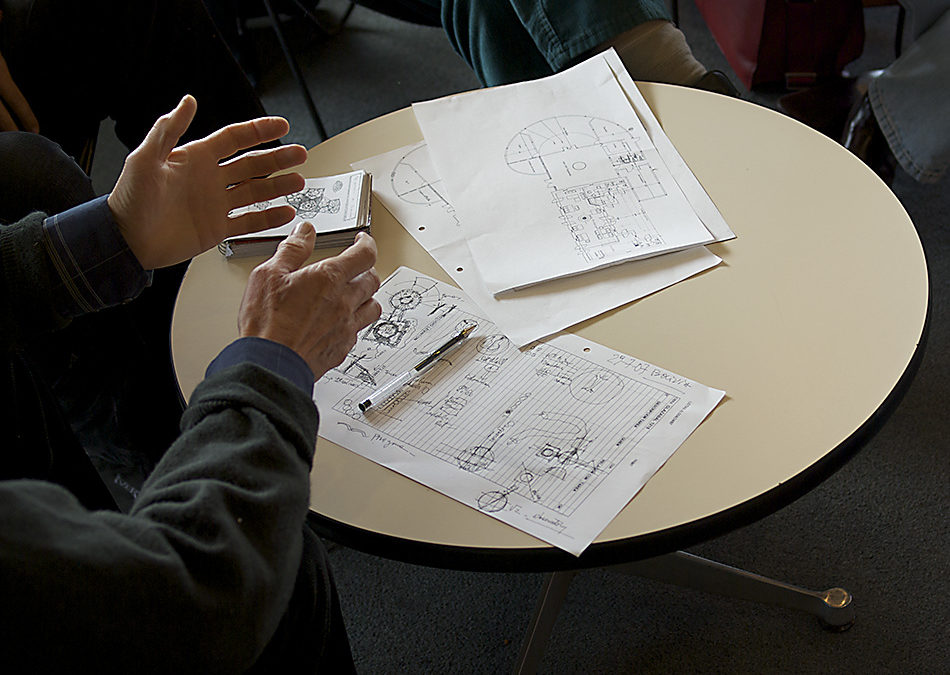We’ve been quiet on these pages (though not on the ground) for many months. Cooperativa Nueva Mente continues to manufacture and sell products with the hotpress and now conducts weekly training sessions for a youth group led by a local ceramics teacher. We keep in touch, but are no longer needed to support their projects. Hence no blog posts, which is exactly the way it should be. We’ve been busy with a feasibility study for a new project in South Asia and continue working with university students on design and technology projects that support our work. Details about what’s been going on in Lesotho are for another post. This writing hiatus has given us time to reflect upon Waste for Life’s impact during the past 6 years and plan our future activities and focus. The cycle of action → reflection → action should be familiar to anyone who has studied Friere and other participatory methodologies, and we certainly acknowledge those influences, especially ones that attempt to synthesize education and activism.
Impact assessment is always an elusive, multidimensional affair, and we won’t dress up this post with spurious numbers. For instance, we don’t know the tonnage of plastic we’ve been able to divert from incinerators, landfills or the oceans; neither do we know the number of engineering and design students who, after working alongside us, choose to practice their professions with a dedication to social and environmental norms over and above conventional profit or professional norms. How much extra income have people been able to generate by making composite materials from waste plastic and fibers? 10% more? 30%? 80%? We don’t know exactly. We do know that we’ve been able to introduce and nurture new capabilities, but whether they’ve been exercised enough to endure, and what the familial, social, and political ramifications of these ‘capacity strengthenings’ have been are still open questions. When scavengers stop being simply scavengers or urban recoverers (the preferred term in Argentina) and begin manufacturing to serve local needs, how does this affect the fabric of a neighborhood, the dynamics of its networks? And, perhaps, most importantly, how does one’s sense of oneself evolve when new abilities enable participation in public, positively sanctioned activities – activities that need not be hidden and are no longer eschewed?
These are important questions, and we have anecdotal responses to most of them, though no hard answers. But we do know for certain that the simple idea of reducing the damaging environmental impact of non-recycled plastic waste whilst promoting the self-sufficiency and economic security of people who depend upon waste to survive has worldwide traction. And central to our mission is another concept that we learned about from Adam Guevara at Renacer Lanzone: ‘Socializing Knowledge’. It’s what we practiced, but he gave us a name for it. We’ll teach you something, and when you’ve mastered it, you go on to teach it to others. It’s a simple idea that has nothing to do with competition, but with sharing and moving forward together. This is how solidarity networks are built and maintained and, perhaps, this is why Waste for Life’s footprint appears in unexpected places. Some recent examples…
Our friend Katrina Mitchell pointed us to a 2013 paper by C.P.M. Sianipar et al from Indonesia (where we have never worked), ‘Design Methodology for Appropriate Technology: Engineering as if People Mattered’. It was featured on the Engineering for Change website (https://www.engineeringforchange.org) as a systematic and much needed methodology for applying appropriate (humanitarian) technology in development contexts. Not only was our book, Needs and Feasibility: A Guide for Engineers in Community Projects—The Case of Waste for Life, cited in the bibliography, but six additional books from Caroline’s Engineers, Technology, and Society edited series were included in the bibliography as well. Taylor Stevenson, who represents a small NGO in Bhutan (http://www.sji.bt/), contacted us last week about setting up Waste for Life projects that could tie into their national Zero Waste efforts, and Nathaniel Thomas from LRG Holdings in Botswana asked us to explore a public/private partnership with the government of Botswana focused on waste management issues. Ana Rapela, who co-directed one of our projects in Buenos Aires in 2012 has launched Dos Puntos D.I., a BsAs cooperative industrial design workshop that makes products from recyclable plastics using WFL’s processes ( https://www.facebook.com/pages/Dos-Puntos-DI/520323901386444), and Will Wells, the designer of WFL’s wallet, the first product manufactured and sold by cooperativa Nueva Mente in Morón, has started a similar project in his hometown of Providence Rhode Island (http://providenceplastic.com/).
What’s happening now? We’re pursuing a wider, pan South American connection with La Red Latinoamericana de Recicladores (http://redrecicladores.net/) through our friends Marcelo Loto and Sebastian Carenzo from cooperativa Reciclando Sueños. We’d like to tie into the network’s explorations of ‘innovative practices’ using waste materials. Because Waste for Life is such a small organization, it makes sense to us going forward to leverage our knowledge, abilities, and networks by hooking into existing programs with other NGO’s or organizations that share our values and goals. And to this end, we will be working with Dilmah Conservation in Sri Lanka (http://www.dilmahconservation.org/) and the Cambodian Children’s Fund (https://www.cambodianchildrensfund.org/) in Cambodia for our next two projects.
Details and updates will appear here.

